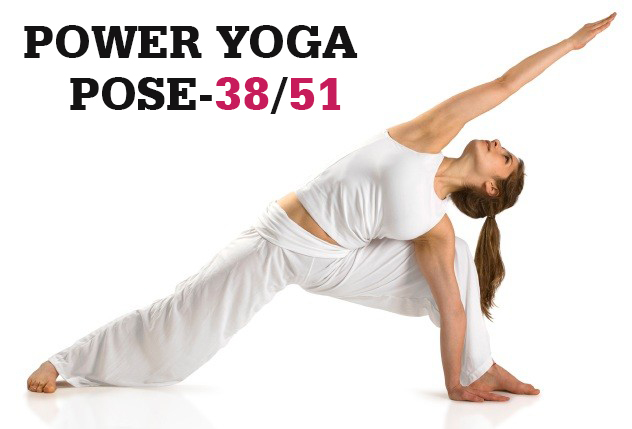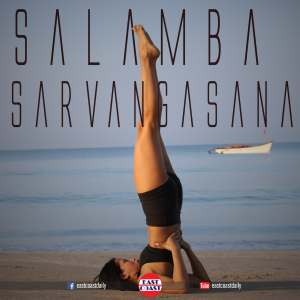
Salamba Sarvangasana – Supported Shoulder Stand Pose
Salamba Sarvangasana pose comes from the Sanskrit words – Salamba Means supported ‘Sarva’ which means ‘all’ and ‘Anga’ which means ‘part’. Supported Shoulder Stand Pose involves all parts of the body as the name suggests. Sarvangasana has become part of the most yoga routine. This is the thirty-eight step in Power Yoga Pose.
Inverted asanas like Salamba Sarvangasana have a special effect on the human body. Usually, all the organs are ‘hanging downwards’ due to the force of gravity. Inverted poses are an attempt to reverse this effect. This can have various health benefits especially for those suffering from piles and certain kinds of hernia.

How to do Salamba Sarvangasana (Supported Shoulder Stand Pose)?
- Start with the supine position, lying on your back in a relaxed way. Let the hands rest on the floor next to the body and breathe normally.
- Try to raise the legs slowly till the legs are almost 90 degrees to the floor.
- Now place the hands under the lower back at the waist level. Use the hands and elbows for support to raise your body up further.
- The breath should be held inside when you are raising the body to the vertical position
- Use the support of the hands to raise the trunk further up, till the whole body is vertical. At this stage, the body weight rests on the shoulders. Hands and elbows remain as props to support and balance the body.
- In the final pose, the body is vertical, 90 degrees to the floor and the chin presses against the chest.
- Remain in this position according to your comfort. For health benefits 3 – 5 minutes every day is good enough. Though practitioners can go up to 15 minutes for spiritual benefits.
- Breathe normally while maintaining the steady raised position.
- While releasing the position, the breath is held inside and the body is slowly brought down to the supine position.
- Sarvangasana can also be practiced before Halasana. After performing Sarvangasana, one can bend the legs further back and touch the ground above the head. Then, this becomes Halasana.
- Matsyasana is commonly practiced after Sarvangasana as it bends the neck in the opposite direction giving a counter stretch to the neck. Ushtrasana and Supta Vajrasana can also be used as a counter pose for Sarvangasana. Please note that the duration maintained for the counterposing (with the backward bend of the neck) should be roughly half the duration of Sarvangasana.
Benefits
- The chin press during Sarvangasana stimulates the thyroid glands. It is good for those suffering from hypothyroidism. The thyroid gland also controls the effectiveness of other hormones. This will help to balance the functions of other endocrine glands.
- The inverted pose relieves the gravitational weight from many organs and helps in piles and certain kinds of hernia.
- Sarvangasana is good for those suffering from elephantiasis as it tends to reduce the inflammation in the legs.
- It tones the spine, the neck, the intestines, other organs in the abdomen and thorax and the shoulders.
- Sarvangasana can help to reduce fat around the waist region.
- As its name suggests, Sarvangasana gives benefits to the entire body and hence is a ‘Queen’ among asanas.

Post Your Comments